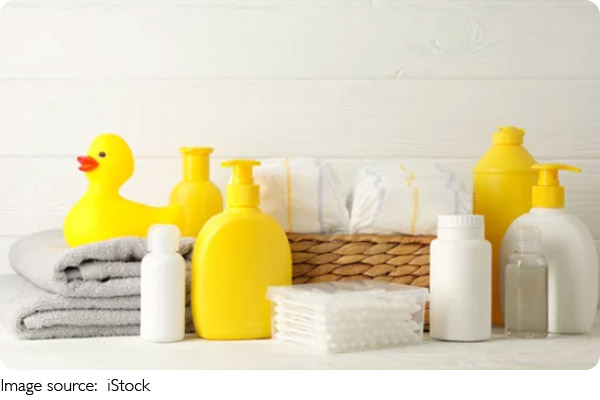Baby Bath Temperature

Bath time is one of the most relaxing and enjoyable activities for both babies and parents. But as we all know, it's important to make sure everything is just right to keep our little ones safe and comfortable.
One of the most crucial factors to consider when preparing for bath time is the water temperature. But what exactly is the right temperature for a baby's bath? Let's dive into the details and explore how to make sure your baby's bath is just perfect!
Why Water Temperature Matters
As parents, we want our babies to feel safe, relaxed, and comfortable, especially during bath time. The wrong water temperature can make your baby uncomfortable, and in extreme cases, it could even lead to burns or chills. Babies have sensitive skin and their bodies are still developing, so they can't regulate their body temperature as efficiently as adults can. This makes it even more important for us to get the water temperature just right.
A bath that's too hot could cause discomfort, irritation, or even burns, while water that's too cold can make your baby shiver and uncomfortable. We want to find that sweet spot where the temperature feels warm and cozy but not too hot, keeping our babies comfortable and safe.
What Is the Ideal Temperature?
So, what exactly is the perfect temperature for a baby's bath? The ideal water temperature for babies is between 37°C and 38°C (about 98.6°F to 100.4°F). This range is warm enough to feel comfortable for your baby but not so hot that it could cause any harm.
To test the temperature, we can either use a baby bath thermometer or check it manually. But manual checking requires a little more care to avoid any mistakes.
How to Check the Water Temperature
If you don't have a baby bath thermometer, you can still check the water temperature with your wrist or elbow. These areas of your body are more sensitive to temperature, and you can easily tell if the water is too hot or too cold.
Here's how we can do it:
1. Fill the Tub with Water: Start by filling the tub with warm water. We don't want to add any cold water afterward, as it could change the temperature too quickly.
2. Check with Your Wrist or Elbow: Gently dip your wrist or elbow into the water. The water should feel warm but not hot. If it feels too warm, add a little cold water. If it feels too cool, add a little more warm water.
3. Use a Baby Bath Thermometer: If you have a thermometer, you can use it to check the water. This is an easy and accurate way to make sure the water is at the right temperature. Many baby bath thermometers come with a color-changing feature to let you know if the water is too hot, too cold, or just right.
Signs the Water Is Too Hot or Too Cold
Sometimes, it's not always easy to tell if the water is just right. If the water is too hot, you may notice your baby starts to cry when you put them in, or their skin might appear red. If the water is too cold, your baby may start to shiver or seem uncomfortable.
When in doubt, it's always better to err on the side of cooler water. We can always warm it up a little if necessary, but it's harder to cool it down quickly once it's too hot.
Other Tips for a Safe and Comfortable Bath
Here are a few more tips to ensure your baby's bath time is safe, comfortable, and enjoyable:
1. Avoid Direct Hot Water: Always make sure to add warm water first before mixing in any cold water. Never let hot water flow directly into the tub when your baby is already in it, as this can cause sudden temperature changes.
2. Stay with Your Baby the Entire Time: Never leave your baby unattended in the bath. Babies can slip or get into trouble even in very shallow water. Always keep one hand on your baby or stay within arm's reach.
3. Use Gentle Baby Products: Always choose gentle, baby-safe soap and shampoo to avoid skin irritation. Babies have delicate skin, and harsh chemicals can cause rashes or dryness.
4. Keep the Room Warm: It's also important to make sure the room where you bathe your baby is warm enough. A cold room can make your baby uncomfortable, especially after a warm bath.
5. Dry Off Quickly: After the bath, quickly wrap your baby in a soft towel to keep them warm and dry. Make sure to dry the folds of their skin, like under the arms and behind the ears, where moisture can get trapped.
What to Do if the Water Gets Too Hot or Too Cold
If you accidentally make the water too hot or too cold, don't worry – it's easy to fix!
• If the water is too hot, add cold water a little at a time and stir it gently to mix.
• If the water is too cold, add warm water in small amounts, checking the temperature often as you go.
It's always better to check and adjust the water temperature a few times before placing your baby in it to avoid any sudden changes.

Final Thoughts
Bath time doesn't have to be stressful! With the right water temperature and a little bit of care, we can make sure that our babies enjoy their bath while staying safe and comfortable. Remember, the ideal water temperature is between 37°C and 38°C (98.6°F to 100.4°F), and always test it before you start the bath. It's important to be cautious, take your time, and enjoy these precious moments with your baby.
If you have any tips, experiences, or questions about baby bath time, feel free to share them! We're all in this together, making sure our little ones stay happy and healthy!


